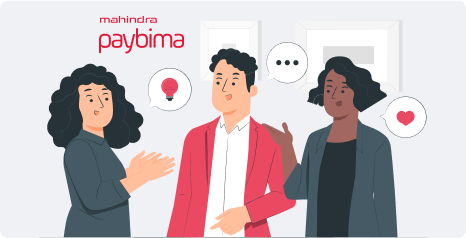.png)
Accidents can happen anywhere, anytime, by your own fault or another person. What’s important is to be prepared for such mishaps. This is where Own Damage Car Insurance comes in handy.


The Insurance Regulatory and Development Authority of India (IRDAI) brought forth a major new rule to defend society's most experienced members. Senior citizens [aged 60 and above] now face a premium increase limitation of 10% per year in their health insurance coverage unless the insurer obtains regulatory approval.

The combination of medical inflation and increasing hospital expenses has elevated premium rates in India's healthcare sector for a long time. Senior citizens with fixed/limited financial incomes have faced dramatic premium surges because of their age.
Premiums for elderly policyholders have doubled from the initial amount [within one year]. Thus, creating an unjustifiable financial situation. The IRDAI implemented this new directive because it aims to protect basic health insurance coverage for the most vulnerable members of society.
The new guidelines enforce two fundamental requirements on health insurance companies regarding senior citizen policies.
The premium increase for senior citizen health insurance policies is limited to a maximum of 10% without requiring further regulatory approval from the IRDAI. The established premium increase limit functions to create predictable and affordable rate adjustments.
The Indian Regulatory and Development Authority must review all requests from insurers who want to increase premium rates beyond 10% or withdraw health insurance products designed for senior citizens. The regulatory safety measure prevents sudden unauthorised changes that would harm senior policyholders' financial positions.
The regulator supports insurers to establish set treatment prices with healthcare facilities. The implementation of standardised hospital charge systems based on PMJAY and other government schemes aims to regulate claim expenses as they represent the primary factor behind premium hikes.
Senior citizens depend on affordable health insurance coverage that complies with their basic needs. Senior citizens face higher medical needs which correspond to increased expensive claim possibilities as they age. Insurers would have the opportunity to implement high premium increases when no cap exists.
The 10% premium limit creates an expected boundary for insurance rate increases, providing senior citizens with financial security in the long run. The established limit protects older adults from unexpected surges in medical and treatment costs which would otherwise compel them to decrease their insurance coverage or skip necessary medical care.
The new premium cap upgrade receives general support from industry professionals. However, experts warn about possible insurer reactions through stricter underwriting requirements for new policy applications. The existing senior policyholders receive premium control benefits, yet new applicants might encounter tougher screening requirements and potentially higher initial premium rates.
Insurance companies may attempt to maintain risk balance by charging extra costs to younger policyholders. The regulatory goal aims to create an equal and clear health insurance market which safeguards vulnerable populations.

Paybima Team
Paybima is an Indian insurance aggregator on a mission to make insurance simple for people. Paybima is the Digital arm of the already established and trusted Mahindra Insurance Brokers Ltd., a reputed name in the insurance broking industry with 21 years of experience. Paybima promises you the easy-to-access online platform to buy insurance policies, and also extend their unrelented assistance with all your policy related queries and services.
.png)
Accidents can happen anywhere, anytime, by your own fault or another person. What’s important is to be prepared for such mishaps. This is where Own Damage Car Insurance comes in handy.

.png)
The no claim bonus (NCB) in bike insurance is a very handy benefit that allows you to save money on your overall motor insurance costs. The bike insurance provider rewards you for not making a claim by offering a discount on the premium of the following year.

.png)
When it comes to medical emergencies, the last thing you want to worry about is arranging money for hospital bills. That’s where a health insurance claim comes in handy. Health insurance allows you to either get your expenses reimbursed later or, in many cases, get treated without paying upfront through a cashless facility.

.png)
Health insurance plans often come with terms that sound like they belong in a secret financial club. One such term is “co-pay.” You might have seen it in your policy document and quietly ignored it, hoping it won’t matter until you actually need to claim. But here’s the twist: co-pay can directly affect how much premium you pay each year.
